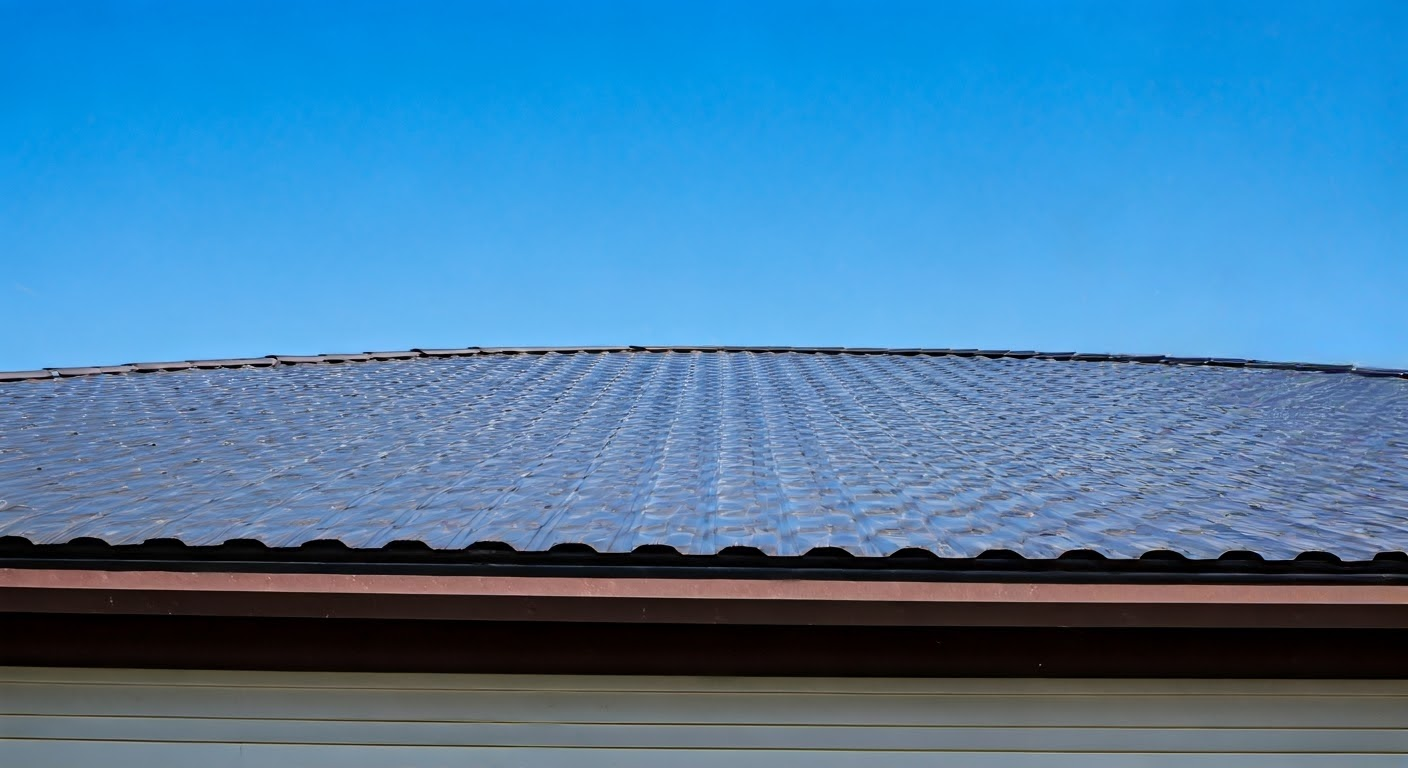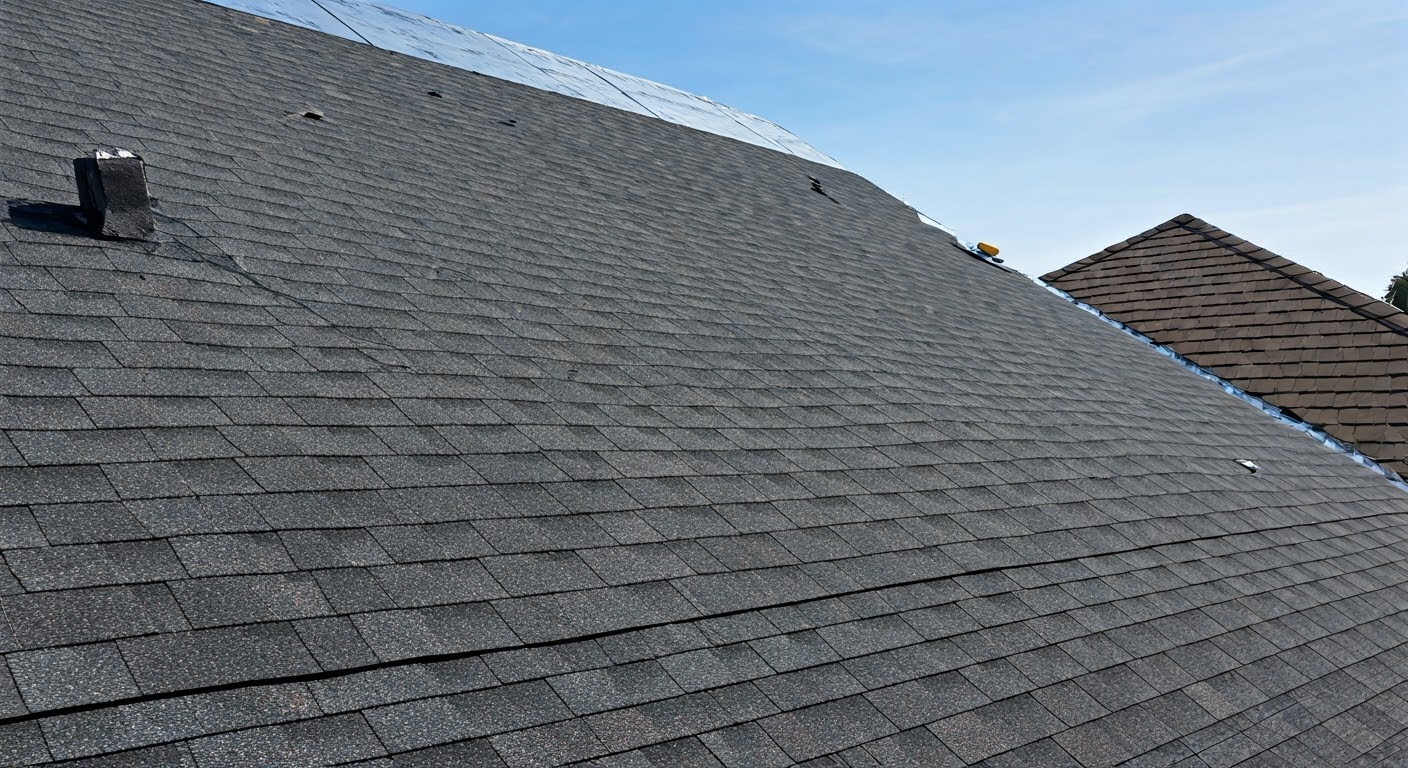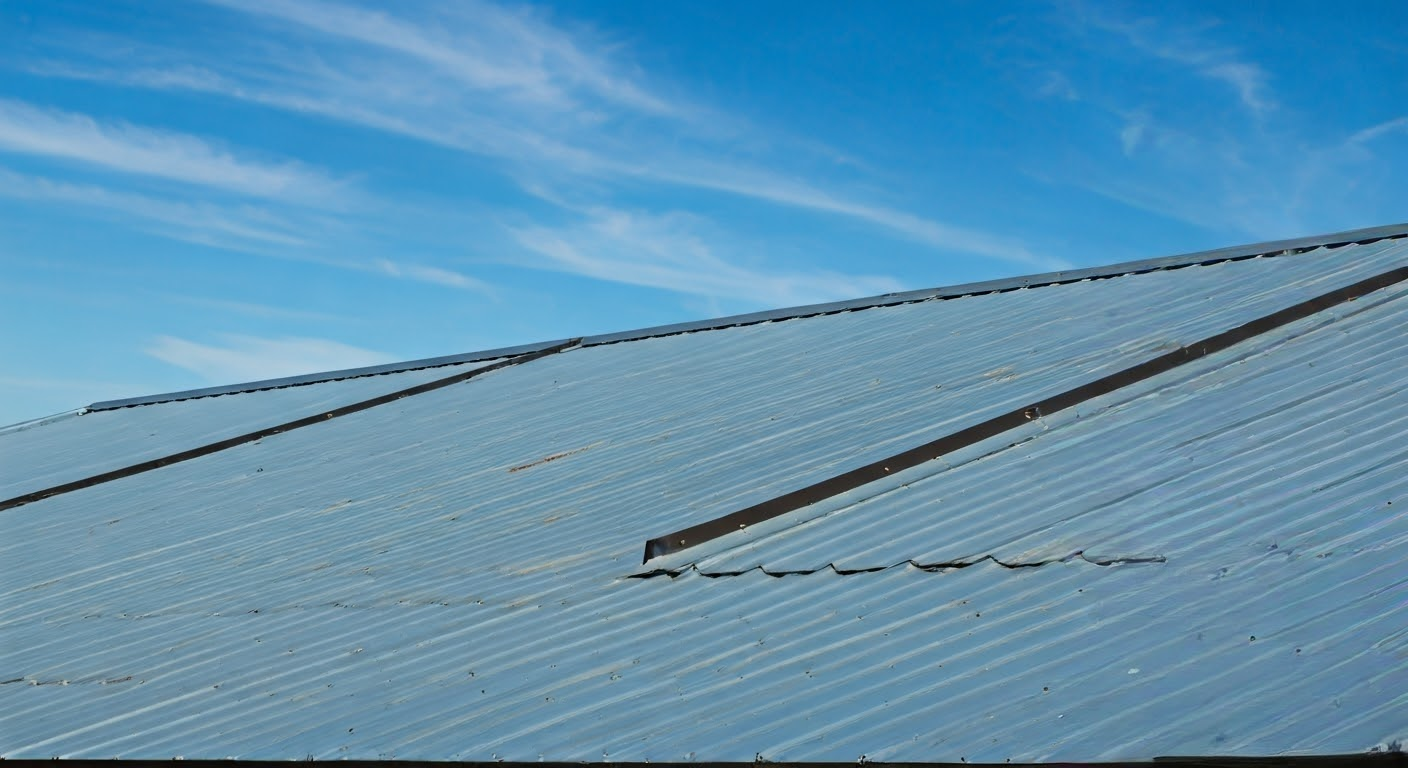
Key Highlights
- Installing a metal roof over existing shingles is a rising trend in home renovation.
- Benefits include potential cost savings on labor and disposal, added insulation, and the extended lifespan of metal roofing.
- The feasibility of this method depends on local building codes, the condition of the original shingles, and the structural integrity of the roof.
- Proper ventilation is crucial to avoid moisture buildup and potential damage.
- Homeowners must weigh these factors carefully to determine if a metal roof over shingles is the optimal choice for their needs.
Introduction
In recent years, a metal roof has become a popular choice for homeowners seeking to upgrade from a traditional shingle roof. While a full roof replacement is always an option, the innovative approach of installing a metal roof over existing shingles is gaining traction. But is this a viable method for every homeowner? Let’s explore the pros, cons, and important considerations involved in installing a metal roof over an existing shingle roof.
Feasibility of Installing Metal Roofs Over Shingles

A common question homeowners have is: can you really put a metal roof over shingles? The answer is, in many cases, yes. However, the decision requires careful evaluation of various factors. Firstly, check your local building codes, as they might have restrictions on layering roofing materials, often due to weight or ventilation concerns.
Secondly, the condition of your existing shingle roof plays a vital role. A severely deteriorated or damaged shingle roof will need to be replaced before installing a new metal roof. This ensures a sturdy and long-lasting foundation for your new metal roof.
Essential Conditions for Roof-Over Installation
Building codes are designed to uphold safety standards in construction, including roofing practices. These codes can limit the feasibility of installing a metal roof over existing shingles. One common restriction stems from weight concerns, as adding a metal roof over shingles might overload the structure.
Furthermore, building codes emphasize proper ventilation. An existing roof in good condition, with adequate ventilation, is more likely to be a suitable candidate for a metal roof overlay. Inadequate ventilation can trap moisture, leading to mold, rot, and premature deterioration of both the old and new roofing materials.
Therefore, consulting your local building codes and obtaining a professional inspection of your existing roof are crucial first steps. This ensures you comply with regulations and verifies that your roof can support the weight of a metal roof.
Structural Considerations and Inspection Priorities
Before considering a metal roof installation over shingles, a thorough inspection of your roof’s integrity is paramount. This involves checking for signs of sagging, rot, or structural damage that could compromise the stability of the roof. Addressing any pre-existing issues is essential to guarantee a sound base for the new metal roof.
Structural considerations should also account for the combined weight of the old shingles and the new metal roof. Metal roofing, while durable, can be heavier than traditional shingles. Ensuring your roof can handle this additional weight is crucial.
An inspection should prioritize identifying any potential weak points, existing leaks, or ventilation issues that could be exacerbated by adding another layer of roofing. Consulting a qualified roofing professional will provide valuable insights and help determine the best course of action.
Benefits of Installing Metal Roof Over Shingles
Choosing a metal roof over shingles has several advantages, particularly when it comes to installation over existing roofing. One significant benefit is the avoidance of a complete tear-off, leading to potential cost savings on labor and disposal fees.
Moreover, keeping the old shingle roof acts as an additional layer of insulation, increasing energy efficiency and potentially reducing energy costs. This method is also environmentally friendly, diverting waste from landfills.
Longevity and Durability Advantages
One of the primary reasons homeowners choose metal roofing is its exceptional longevity and durability. Metal roofs are known for their ability to withstand harsh weather conditions, including heavy rain, snow, hail, and high winds. This resilience translates to a significantly longer lifespan compared to traditional asphalt shingles.
Furthermore, metal roofing requires minimal maintenance, reducing the long-term costs and hassle associated with upkeep. Their resistance to rot, insects, and fire further contributes to their extended lifespan, offering homeowners a secure and reliable roofing solution for decades to come.
The durability of metal roofing provides peace of mind knowing that your home is protected from the elements. This protection, coupled with its impressive lifespan, makes metal roofing a wise investment for homeowners seeking a long-lasting and dependable roofing solution.
Energy Efficiency and Environmental Impact
Metal roofs are renowned for their energy efficiency, contributing to lower energy costs and a reduced environmental footprint. Their reflective properties help decrease heat absorption, keeping your home cooler in warmer months and potentially reducing reliance on air conditioning. This can lead to significant savings on your energy bills.
Moreover, opting to install a metal roof over existing shingles furthers the environmental benefits by:
- Reducing Waste: Bypassing a complete tear-off minimizes the amount of roofing material sent to landfills.
- Conserving Resources: Choosing a durable and long-lasting option like metal roofing reduces the need for frequent replacements, conserving resources in the long run.
- Lowering Energy Consumption: Improved energy efficiency translates to reduced energy consumption, contributing to a smaller carbon footprint.
By considering the long-term environmental impact, homeowners can make sustainable choices that benefit both their wallets and the planet.
Challenges and Disadvantages

While installing a metal roof over shingles offers advantages, there are also potential drawbacks to consider. One concern is the risk of trapping moisture between the two layers, potentially leading to mold growth and damaging both the old and new roofing materials. Additionally, concealing underlying issues with the existing roof can exacerbate problems and lead to costly repairs down the line.
Another factor to consider is the added weight on the roof structure. It’s crucial to ensure that your home’s structure can handle the combined weight of both roofing systems, and a professional inspection is highly recommended.
Potential Issues with Ventilation
One of the most critical aspects of any roofing system, including a metal roof over shingles, is proper ventilation. Inadequate ventilation can lead to several problems, including:
- Moisture Buildup: Trapped moisture creates a breeding ground for mold and mildew, compromising the integrity of both roofing layers.
- Condensation: Temperature fluctuations can cause condensation to form, leading to moisture damage and reducing the lifespan of the roof.
- Reduced Energy Efficiency: Proper ventilation helps regulate temperature and prevents heat buildup, contributing to energy savings.
| Problem | Cause | Solution |
|---|---|---|
| Moisture Buildup | Lack of airflow, trapped humidity | Ridge vents, soffit vents, adequate attic insulation |
| Condensation | Temperature differences, poor insulation | Improve ventilation, address insulation deficiencies |
| Reduced Energy Efficiency | Trapped heat, poor airflow | Ensure proper ventilation, consider reflective insulation |
Addressing ventilation issues before installing a metal roof over shingles is crucial to avoid these potential problems and ensure the longevity of your roof.
Risk of Improper Installation
While a metal roof offers durability and longevity, improper installation can negate these benefits and lead to numerous problems. One common issue is improper sealing, which allows water infiltration and potential leaks. This can lead to damage to the roofing structure, insulation, and potentially the interior of your home.
To mitigate risks and ensure the longevity of your metal roof:
- Hire Experienced Professionals: Choosing a qualified and experienced roofing contractor specializing in metal roof installations is paramount. They possess the knowledge and expertise to address potential challenges and ensure proper installation.
- Thorough Inspection: Before installation begins, a comprehensive inspection of the existing roof’s condition and structure is crucial. Identifying and addressing any underlying issues prevents further damage and ensures a solid foundation for the new metal roof.
- Follow Manufacturer’s Guidelines: Adhering to the manufacturer’s specifications for installation, including proper ventilation, flashing, and fastener techniques, guarantees optimal performance and warranty coverage.
By taking these precautions, you can minimize the risk of disruptions and costly repairs caused by improper installation, ensuring that your metal roof investment provides long-lasting protection and peace of mind.
Conclusion
In conclusion, choosing a metal roof over shingles has several advantages, particularly when it comes to installation over existing roofing. One significant benefit is the avoidance of a complete tear-off, leading to potential cost savings on labor and disposal fees. At Metal Roof Mobile AL, we ensure our clients receive the best possible outcomes. Our commitment to quality workmanship and customer satisfaction is unwavering, making us the top choice for residential Roofing services in our community.
Frequently Asked Questions
Can you install a metal roof over two layers of shingles?
Installing a metal roof over two layers of shingles is not always advisable, as building codes often restrict this practice due to the combined weight exceeding the roof’s capacity. The weight of a metal roof, coupled with the existing layers, may overload the structure. It’s crucial to consult your local building codes and a structural engineer to determine the feasibility.
What are the first steps in planning a metal roof-over?
Begin by scheduling a professional inspection of your existing roof, prioritizing structural considerations and identifying any existing issues. This assessment will help determine if a roof replacement is necessary or if your current roof can support a new metal roof.
